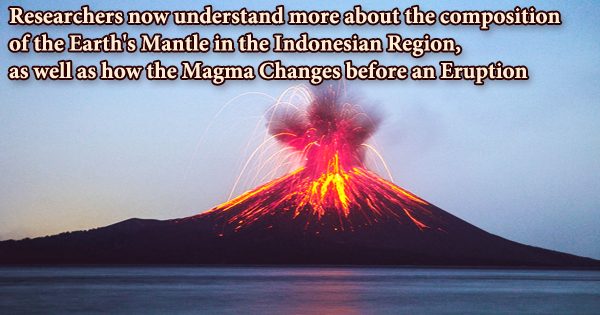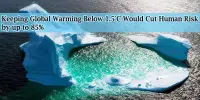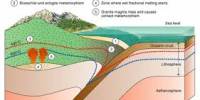Volcanoes in Indonesia are among the most dangerous in the world. Researchers from Uppsala University and other institutions have discovered fresh hints by analyzing microscopic minerals in lava from Bali and Java. They now know more about the composition of the Earth’s mantle in that area, as well as how the magma evolves before an eruption. The research was published in the journal Nature Communications.
The findings are summarized by Frances Deegan, the study’s first author and a researcher at Uppsala University’s Department of Earth Sciences.
“The mantle is where magma is generated, and the makeup of the mantle under Indonesia was previously unknown. We can build more reliable models for the chemical changes in magma as it breaks through the 20 to 30-kilometer thick crust there before an eruption if we have a better understanding of the Earth’s mantle in this location.”
The composition of magma varies considerably depending on the geological context, and it influences the type of volcanic eruption that occurs. Volcanism was responsible for the formation of the Indonesian archipelago, which was triggered by the collision of two continental tectonic plates. The Indo-Australian plate slips beneath the Eurasian plate at a rate of around 7 centimeters per year in this collision. Subduction is a mechanism that can result in large earthquakes. Movements along this plate boundary, for example, contributed to the 2004 tsunami tragedy.
Volcanism can also occur in subduction zones. As the tectonic plate sinks further into the mantle, it warms up and releases the water it holds, causing the surrounding rock to melt. As a result, volcanoes become increasingly explosive and, over time, form arc-shaped groupings of islands. Several devastating volcanic eruptions have occurred along the Sunda Arc, which spans Indonesia’s southern archipelago. Krakatoa in 1883, Mount Tambora in 1815, and Toba, which experienced a tremendous super-eruption 72,000 years ago, are all examples.
When magma enters the Earth’s crust and breaks out on the surface, it interacts chemically with the surrounding rock. As a result, it varies greatly amongst volcanoes. The researchers hoped to know the composition of the “primary” magma, which is produced from the mantle itself, in order to better understand the origins of volcanism in Indonesia. Because samples of the mantle could not be collected directly, scientists looked at minerals in lava erupted lately from four volcanoes: Merapi and Kelut in Java and Agung and Batur in Bali.
The researchers investigated pyroxene crystals using strong ion beams from secondary ion mass spectrometry (SIMS) equipment, an ultramodern kind of mass spectrometer. This is one of the earliest minerals to crystallize from magma. The ratio of the oxygen isotopes 16O and 18O, which informs a lot about the source and development of magma, was what they were looking for.
“Lava consists of roughly 50 percent oxygen, and Earth’s crust and mantle differ hugely in their oxygen isotope composition. So, to trace how much material the magma has assimilated from the crust after leaving the mantle, oxygen isotopes are very useful,” Frances Deegan says.
The oxygen content of pyroxene crystals from Bali had scarcely changed during their journey through the Earth’s crust, according to the researchers. Their composition was nearly identical to that of the mantle, indicating that just a little amount of material had been pulled down during subduction. In the minerals from Java, a completely distinct pattern was discovered.
“We were able to see that Merapi in Java exhibited an isotope signature very different from those of the volcanoes in Bali. It’s partly because Merapi’s magma interacts intensively with Earth’s crust before erupting. This is critical because when magma combines with limestone found in central Java directly beneath the volcano, the magma becomes bursting at the seams with carbon dioxide and water, making the eruptions more explosive. That may be why Merapi’s so dangerous. It’s actually one of the deadliest volcanoes in Indonesia: it’s killed nearly 2,000 people in the past 100 years, and the most recent eruption claimed 400 lives,” says Professor Valentin Troll of Uppsala University’s Department of Earth Sciences.
Uppsala University, the Swedish Museum of Natural History in Stockholm, the University of Cape Town in South Africa, the University of Freiburg in Germany, and the Vrije Universiteit (VU) Amsterdam in the Netherlands collaborated on the project. The study’s findings add to our knowledge of how volcanism operates throughout the Indonesian archipelago.
“Indonesia is densely populated, and everything that gives us a better grasp of how these volcanoes work is valuable and helps us to be better prepared for when the volcanoes erupt,” says Frances Deegan.
















